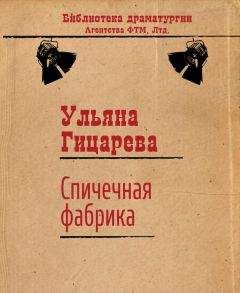Кристофер Дэр - Пациент и психоаналитик: основы психоаналитического процесса
GREENSON, R.R., WEXLER, М. (1969). The non-transference relationship in the psychoanalytic situation // International Journal of Psycho-Analysis, 50: 27–39.
GRINBERG, L. (1962). On a specific aspect of counterntransference due to the patient’s projective identification // International Journal of Psycho-Analysis, 43: 436–440.
GRINBERG, L. (1968). On acting out and its role in the psychoanalytic process // International Journal of Psycho-Analysis, 49: 171–178.
GRINBERG, L. (1987). Dreams and acting out // Psychoanalytic Quarterly, 56, 155–176.
GRUNERT, U. (1979). Die negative therapeutische Reaktion als Ausdruck einer Stoerung im Losloesungs – und Individuationsprozess // Psyche, 33, 1—29.
GUNDERSON, J.G. (1977). Characteristics of bordelines // P. Hartocollis (Ed.), Borderline Personality Disorders: The Concept, the Symptom, the Patient. – N.Y.: International Universities Press.
GUNDERSON, J.G. (1984). Borderline Personality Disorder. – Washington, DC: American Psychatric Press.
GUTHEIL, Т.G., HAVENS, L.L. (1979). The therapeutic alliance: contemporary meanings and confusions // International Review of Psychoanalysis, 6: 467–481.
HALPERT, E. (reporter) (1984). Panel: The value of extratransference interpretation // Journal of the American Psychoanalytic Association, 32, 137–146.
HAMMETT, V.B.O. (1961). Delusional transference // American Journal of Psychotherapy, 15: 574–581.
HANLY, C. (1981). Narcissism, defence and the positive transference // International Journal of Psycho-Analysis, 63: 427–444.
HARLEY, M. (1971). The current status of transference neurosis in children // Journal of the American Psychoanalytic Association, 19, 26–40.
HARTMANN, H. (1939). Ego Psychology and the Problem of Adaptation. – Lndn.: Imago, 1958.
HARTMANN, H. (1944). Psychoanalysis and sociology // Essays on Ego and Psychology. – Lndn.: Hogarth Press, 1964.
HARTMANN, H. (1951). Technical implications of ego psychology // Psychoanalytic Quarterly, 20, 31–43.
HARTMANN, H. (1956). The development of the ego concept in Freud’s work // International Journal of Psycho-Analysis, 37: 425–438.
HARTMANN, H. (1964). Essays on Ego Psychology. – Lndn.: Hogarth Press.
HATCHER, R.L. (1973). Insight and self-observation // Journal of the American Psychoanalytic Association, 21, 377–398.
HEIMANN, P. (1950). On counter-transference // International Journal of Psycho-Analysis, 31: 81–84.
HEIMANN, P. (1960). Counter-transference // British Journal of Medical Psychology, 33: 9—15.
HILL, D. (1968). Depression: disease, reaction or posture? // American Journal of Psychiatry, 125: 445–457.
HINSHELWOOD, R.D. (1989). A Dictionary of Kleinian Thought. – Lndn: Free Association Books.
HINSIE, L.E., CAMPBELL, R.J. (1970). Psychiatric Dictionary (4th edition). – Lndn: Oxford University Press.
HOFFER, W. (1956). Transference and transference neurosis // International Journal of Psycho-Analysis, 37: 377–379.
HOLDER, A. (1970). Conceptual problems of acting out in children // Journal of Child Psychotherapy, 2: 5—22.
HOKNEY, К. (1936). The problem of the negative therapeutic reaction / / Psychoanalytic Quarterly, 5, 29–44.
HOROWITZ, M.H. (1987). Some notes on insight and its failures // Psychoanalytic Quarterly, 56, 177–198.
INFANTE, J.A. (1976). Acting out: a clinical reappraisal // Bulletin of the Menninger Clinic, 40: 315–324.
ISAAKS, S. (1939). Criteria for interpretation // International Journal of Psycho-Analysis, 20: 148–160.
IVIMEY, M. (1948). Negative therapeutic reaction // American Journal of Psychoanalysis, 8: 24–33.
JACOBS, T.J. (1973). Posture, gesture, and movement in the analysis: cues to interpretation and countertransference // Journal of the American Psychoanalytic Association, 21, 77–92.
JACOBS, T.J. (1983). The analyst and the patient’s object world: notes on an aspect of countertransference // Journal of the American Psychoanalytic Association, 31, 619–642.
JACOBS, T.J. (1986). On countertransference enactments // Journal of the American Psychoanalytic Association, 34, 289–307.
JACOBS, T.J. (1987). Notes on the unknowable: analytic secrets and the transference neurosis // Psychoanalytic Inquiry, 7, 485–509.
JASPERS, K. (1913). Allgemeine Psychopathologie. – Berlin: Springer Verlag.
JOFFE, W.G., SANDLER, J. (1965). Notes on pain, depression and individuation // Psychoanalytic Study of the Child, 20: 394–424.
JOFFE, W.G., SANDLER, J. (1967). On the concept of pain, with special reference to depression and psychogenic pain // Journal of Psychosomatic Research, 11: 69–75.
JONES, E. (1955). Sigmund Freud: Life and Work, Vol. 2. – N.Y.: Basic Books.
JOSEPH, B. (1985). Transference: the total situation // International Journal of Psycho-Analysis, 66: 447–454.
JOSEPH, B. (1987). Projective identification: clinical aspects // J. Sandier (Ed.), Projection, Identification, Projective Identification. – Madison CT: International Universities Press.
JUNG, C.G. (1907). Ueber die Psychologic der Dementia Praecox: Ein Versuch, Halle A.S. // Collected Works, Vol. 3. – Lndn: Routledge & Kegan Paul, 1960.
KANZER, M. (1981). Freud's «analytic pact»: the standard therapeutic alliance // Journal of the American Psychoanalytic Association, 29, 69–87.
KAPLAN, A. (1964). The Conduct of Inquiry. – San Francisco: Chandler Publishing Co.
KEMPER, W.W. (1966). Transference and countertransference as a functional unit: Official Report on Pan-American Congress for Psycho-Analysis.
KENNEDY, H. (1979). The role of insight in child analysis: a developmental viewpoint // Journal of the American Psychoanalytic Association, 27 (supplement), 9—28.
KEPECS, J.G. (1966). Theories of transference neurosis // Psychoanalytic Quarterly, 35, 497–521.
KERNBERG, O.F. (1965). Notes on countertransference // Journal of the American Psychoanalytic Association, 13, 38–56.
KERNBERG, O.F. (1967). Borderline personality organisation // Journal of the American Psychoanalytic Association, 15, 641–685.
KERNBERG, O.F. (1975). Borderline Conditions and Pathological Narcissism. – N.Y.: Jason Aronson.
KERNBERG, O.F. (1976a). Object Relations Theory and Clinical Psychoanalysis. – N.Y.: Jason Aronson.
KERNBERG, O.F. (1976b). Technical considerations in the treatment of borderline personality organisation // Journal of the American Psychoanalytic Association, 24, 795–829.
KERNBERG, O.F. (1980a). Character structure and analyzability // Bulletin of the Association of Psychoanalytic Medicine, 19: 87–96.
KERNBERG, O.F. (1980b). Internal World and External Reality. – N.Y.: Jason Aronson.
KERNBERG, O.F. (1985). Object relations theory and character analysis // H.P. Blum (Ed.), Defense and Resistance. – N.Y.: International Universities Press.
KERNBERG, O.F. (1987). An ego psychology-object relations theory approach to the transference // Psychoanalytic Quarterly, 56, 197–221.
KERNBERG, O.F. (1988). Object relations theory in clinical practice // Psychoanalytic Quarterly, 57, 481–504.
KERZ-RUEHLING, I. (1986). Freuds Theorie der Einsicht // Psyche, 40: 97—123.
KHAN, M.M.R. (1960). Regression and integration in the analytic setting // International Journal of Psycho-Analysis, 41: 130–146.
KHAN, M.M.R. (1963). Silence as communication // Bulletin of the Menninger Clinic, 27: 300–317.
KHAN, M.M.R. (1972). Dread of surrender to resourceless dependence in the analytic situation // International Journal of Psycho-Analysis, 53: 225–230.
KING, P. (1974). Notes on the psychoanalysis of older patients. Reappraisal of the potentialities for change during the second half of life // Journal of Analytical Psychology, 19: 22–37.
KLAUBER, J. (1972). On the relationship of transference and interpretation in psychoanalytic therapy // International Journal of Psycho-Analysis, 53: 385–391.
KLAUBER, J. (1980). Formulating interpretation in clinical psychoanalysis // International Journal of Psycho-Analysis, 61: 195–202.
KIAUBER, J. (1981). Difficulties in the Analytic Encounter. – N.Y.: Jason Aronson. [Reprinted Lndn: Karnac Books, 1986.]
KLEIN, M. (1932). The Psycho-Analysis of Children. – Lndn.: Hogarth Press.
KLEIN, M. (1946). Notes on some schizoid mechanism // M. Klein, P. Heiman, S. Isaacs, & J. Riviere (Eds.), Developments in Psycho-Analysis. – Lndn.: Hogarth Press, 1952. [Reprinted Lndn: Karnac Books, 1989.]
KLEIN, M. (1948). Contributions to Psycho-Analysis. – Lndn.: Hogarth Press.
KLEIN, M. (1957). Envy and gratitude // Envy and Gratitude and Other works, 1946–1963. – Lndn.: Hogarth Press, 1975.
KLUEWER, R. (1983). Agieren und Mitagieren // Psyche, 37: 828–840.
KNIGHT, R.P. (1940). Introjection, projection and identification // Psychoanalytic Quarterly, 9, 334–341.
KNIGHT, R.P. (1953). Borderline states // Bulletin of the Menninger Clinic, 17: 1—12.
KOEHLER, W. (1925). The Mentality of Apes. – N.Y.: Harcourt Brace & World Inc. Рус, пер.: Келер В. Исследование интеллекта человекоподобных обезьян. М.: Изд-во Комм. академии, 1930.
KOHUT, Н. (1966). Forms and transformations of narcissism // P. Ornstein (Ed.), The Search for the Self. – N.Y.: International Universities Press.
KOHUT, H. (1968). The psychoanalytic treatment of narcistic personality disorders. Outline of a systematic approach // The Psychoanalytic Study of the Child, 23: 86—113.
KOHUT, H. (1971). The Analysis of the Self. – N.Y.: International Universities Press.
KOHUT, H. (1977). The Restoration of the Self. – N.Y.: International Universities Press.
KOHUT, H. (1984). How Does Analysis Cure? – Chicago: University of Chicago Press.
KRAEPELIN, E. (1906). Lectures on Clinical Psychiatry – N.Y.: Hafner, 1969.
KRAMER, M.K. (1959). On the continuation of the analytic process after psychoanalysis // International Journal of Psycho-Analysis, 40: 17–25.
KRIS, E. (1951). Ego psychology and interpretation in psychoanalytic therapy // Psychoanalytic Quarterly, 20, 15–29.
KRIS, E. (1952). Explorations in Art. – N.Y.: International Universities Press.
KRIS, E. (1956a). The recovery of childhood memories in psychoanalysis // The Psychoanalytic Study of the Child, 11: 54–88.
KRIS, E. (1956b). On some vicissitudes of insight in psychoanalysis // International Journal of Psycho-Analysis, 37: 445–455.
KUBIE, L.S. (1950). Practical and Theoretical Aspects of Psychoanalysis – N.Y.: International Universities Press.
LAMPL-DE GROOT, J. (1967). On obstacles standing in the way of psycho-analytic cure // The Psychoanalytic Study of the Child, 22: 20–35.
LANGS, R.J. (1975). The therapeutic relationship and deviations in technique // International Journal of Psychoanalytic Psychotherapy, 4: 106–141.
LANGS, R J. (1976). The Therapeutic Interaction, Vols. 1 and 2. – N.Y.: Jason Aronson.
LANGS, R. J. (1978). The adaptational-interactional dimension of counter-transference // Contemporary Psychoanalysis, 14: 502–533.
LAPLANCHE, J., PONTALIS, J.B. (1973). The Language of Psychoanalysis. – Lndn.: Hogarth Press. [Reprinted Lndn: Karnac Books, 1988.]
LASKY, R. (1989). Some determinants of the male analyst's capacity to identify witn female patients // International Journal of Psycho-Analysis, 70: 405–418.
LEIDER, R.J. (reporter) (1984). Panel: The neutrality of the analyst in the analytic situation // Journal of the American Psychoanalytic Association, 32, 573–585.
LEITES, N. (1977). Transference interpretations only? // International Journal of Psycho-Analysis, 58: 275–287.
LESTER, E.P. (1985). The female analyst and the erotized transference // International Journal of Psycho-Analysis, 66: 283–293.
LEVY, J. (1982). A particular kind of negative therapeutic reaction based on Freud’s «borrowed guilt» // International Journal of Psycho-Analysis, 63: 361–368.
LEWIN, B. (1950). The Psychoanalysis of Elation – N.Y.: W.W. Norton.
LEWIN, B. (1961). Reflections on depression // Psychoanalytic Study of the Child, 16: 321–331.
LIDZ, Т., FLECK, S., CORNELISON, A. (Eds.) (1965) Schizophrenia and the Family. – N.Y.: International Universities Press.
LIMENTANI, A. (1966). A re-evaluation of acting out in relation to working through // International Journal of Psycho-Analysis, 47: 274–282.
LIMENTANI, A. (1981). On some positive aspects of the negative therapeutic reaction // International Journal of Psycho-Analysis, 62: 379–390.
LIPTON, S.D. (1977). Clinical observations on resistance to the transference // International Journal of Psycho-Analysis, 58: 463–472.
LITTLE, M. (1951). Countertransference and the patients respose to it // International Journal of Psycho-Analysis, 32: 32–40.
LITTLE, M. (1958). On delusional transference (transference psychosis) // International Journal of Psycho-Analysis, 39: 134–138.
LITTLE, M. (1960a). On basic unity // International Journal of Psycho-Analysis, 41: 377–384.
LITTLE, M. (1960b). Countertransference // British Journal of Medical Psychology, 33: 39–31.
LITTLE, M. (1966) Transference in borderline states // International Journal of Psycho-Analysis, 47: 476–485.
LOEWALD, H.W. (1960). On the therapeutic action of psychoanalysis // International Journal of Psycho-Analysis, 41: 16–33.
LOEWALD, H.W. (1972). Freud’s conception of the negative therapeutic reaction with comments on instinct theory // Journal of the American Psychoanalytic Association, 20, 235–245.
LOEWALD, H.W. (1974). Current status of the concept of infantile neurosis: discussion // The Psychoanalytic Study of the Child, 29: 183–190.
LOEWALD, H.W. (1979). Reflections of the psychoanalytic process and its therapeutic potential // The Psychoanalytic Study of the Child, 34: 155–168.
LOEWALD, H.W. (1986). Transference-countertransference // Journal of the American Psychoanalytic Association, 34, 275–287.
LOEWENSTEIN, R.M. (1951). The problem of interpretation // Psychoanalytic Quarterly, 20, 1—14.
LOEWENSTEIN, R.M. (1954). Some remarks on defences, autonomous ego and psychoanalytic technique // International Journal of Psycho-Analysis, 35: 188–193.
LOEWENSTEIN, R.M. (1969). Developments in the theory of transference in the last fifty years // International Journal of Psycho-Analysis, 50: 583–588.
LONDON, N.J. (1987). Discussion: in defense of the transference neurosis concept: a process and interactional definition // Psychoanalytic Inquiry, 7, 587–598.
LORAND, S. (1958). Resistance // Psychoanalytic Quarterly, 27, 462–464.
MAHLER, M.S. (1968). On Human Symbiosis and the Vicissitudes of Individuation, Vol. 1. – N.Y.: International Universities Press.
MAHLER, M.S.. PINE, F., BERGMAN, A. (1975). The Psychological Birth of the Human Infant: Symbiosis and Individuation. – N.Y.: Basic Books. [Reprinted Lndn: Karnac Books, 1986.]
MAIN, T.F. (1957). The ailment // British Journal of Medical Psychology, 30: 129–145.
MAIN, T.F. (1989). The Ailment and Other Psychoanalytic Essays. – Lndn.: Free Association Books.




